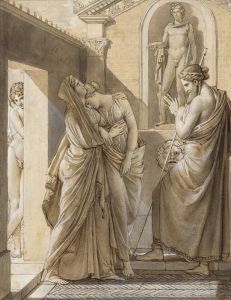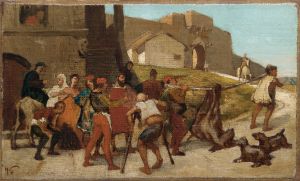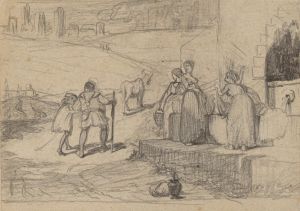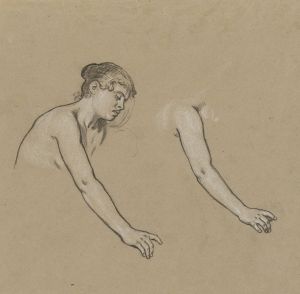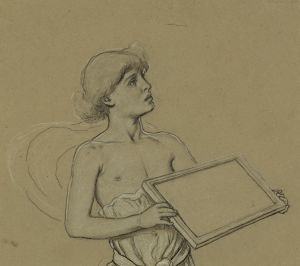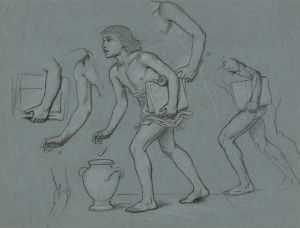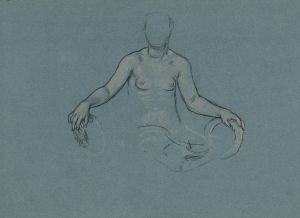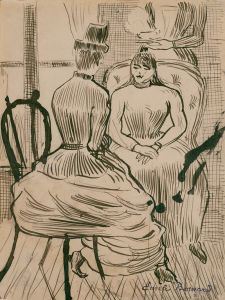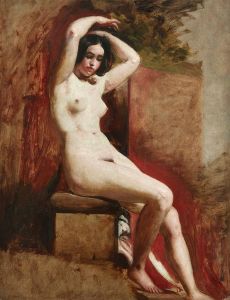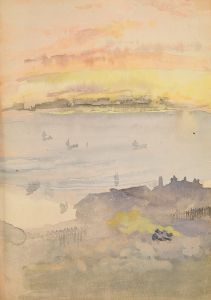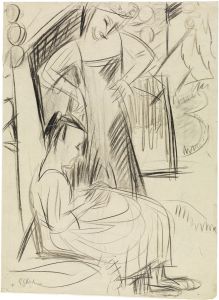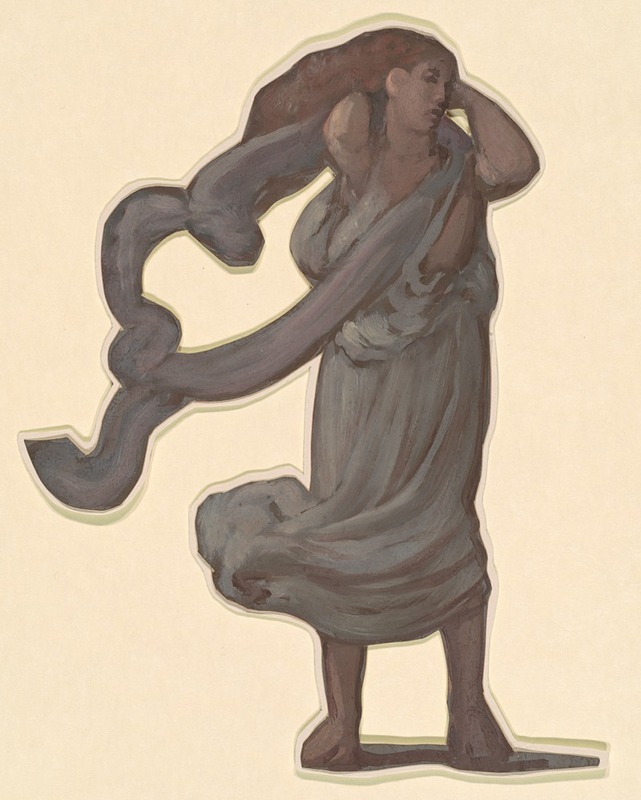
Study for ‘Greek Girls Bathing’ V
A hand-painted replica of Elihu Vedder’s masterpiece Study for ‘Greek Girls Bathing’ V, meticulously crafted by professional artists to capture the true essence of the original. Each piece is created with museum-quality canvas and rare mineral pigments, carefully painted by experienced artists with delicate brushstrokes and rich, layered colors to perfectly recreate the texture of the original artwork. Unlike machine-printed reproductions, this hand-painted version brings the painting to life, infused with the artist’s emotions and skill in every stroke. Whether for personal collection or home decoration, it instantly elevates the artistic atmosphere of any space.
Elihu Vedder was an American symbolist painter, born on February 26, 1836, in New York City. He is known for his imaginative and often mystical works, which frequently incorporate themes from mythology, literature, and his own philosophical musings. Vedder spent a significant portion of his career in Italy, where he was influenced by the classical art and culture that surrounded him.
One of Vedder's notable works is "Study for ‘Greek Girls Bathing’ V," which is part of a series of studies he created exploring the theme of Greek girls bathing. This particular study, like others in the series, reflects Vedder's interest in classical antiquity and his skill in capturing the human form. The work is characterized by its delicate portrayal of figures and the serene, almost dreamlike quality that Vedder often infused into his paintings.
The "Greek Girls Bathing" series is emblematic of Vedder's fascination with the ancient world and his ability to blend realism with idealism. In these studies, Vedder often depicted young women in various poses, engaged in the act of bathing, a subject that allowed him to explore both the beauty of the human body and the tranquil, idyllic settings reminiscent of ancient Greece. The studies are not only exercises in form and composition but also serve as a testament to Vedder's deep appreciation for classical themes and his ability to reinterpret them through a 19th-century lens.
Vedder's technique in these studies is notable for its attention to detail and the subtle use of light and shadow to create depth and dimension. His brushwork is both precise and fluid, capturing the softness of the skin and the gentle movement of water. The figures are often set against a backdrop that suggests a natural, yet timeless landscape, further enhancing the classical feel of the work.
Throughout his career, Vedder was associated with the American expatriate community in Rome, where he was part of a vibrant artistic scene that included other painters, sculptors, and writers. His work was well-received both in Europe and the United States, and he exhibited widely, gaining a reputation as a leading figure in the symbolist movement.
In addition to his paintings, Vedder was also an accomplished illustrator and poet. He is perhaps best known for his illustrations of Edward FitzGerald's translation of "The Rubaiyat of Omar Khayyam," which remain highly regarded for their intricate detail and imaginative interpretation of the text.
Elihu Vedder's legacy is marked by his unique ability to blend classical themes with a modern sensibility, creating works that are both timeless and evocative. His "Study for ‘Greek Girls Bathing’ V" is a fine example of his artistic vision and his skill in capturing the beauty and mystery of the human form. Vedder passed away on January 29, 1923, leaving behind a rich body of work that continues to be celebrated for its artistic and cultural significance.





